The statue of Prince Mihailo on horseback stands prominently in Belgrade’s Republic Square. Locally known as “The Horse,” this striking monument serves as both a popular meeting spot and the starting point for tourists embarking on their exploration of the city. Beyond its practical and symbolic roles, this iconic landmark holds a rich narrative of Serbian history, which we will delve into in this article.
Table of Contents
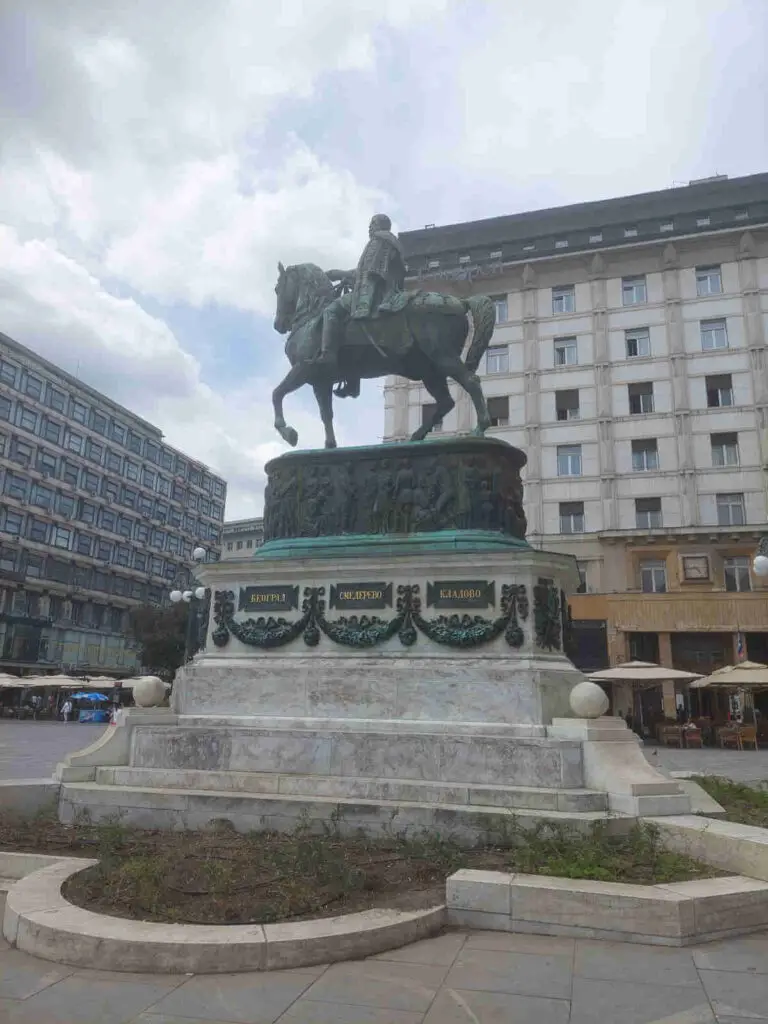
History of Prince Mihailo Monument
The Prince Mihailo Monument stands as the centerpiece of Belgrade’s main square. Before its construction, the area was dominated solely by the National Theatre. The official unveiling of the monument took place in December 1882, on the day of Saint Nicholas, patron of the Obrenović dynasty. The moment marked the beginning of gradual urban development around Republic Square.
Who was Prince Mihailo?
Prince Mihailo Obrenović (1823–1868) ruled Serbia twice, from 1839 to 1842 and again from 1860 to 1868. His legacy is marked by his pivotal role in securing the independence of Serbian cities from Ottoman rule in 1867. Tragically, he was assassinated in 1868 by a group of conspirators in Belgrade’s Košutnjak forest.
About the Monument
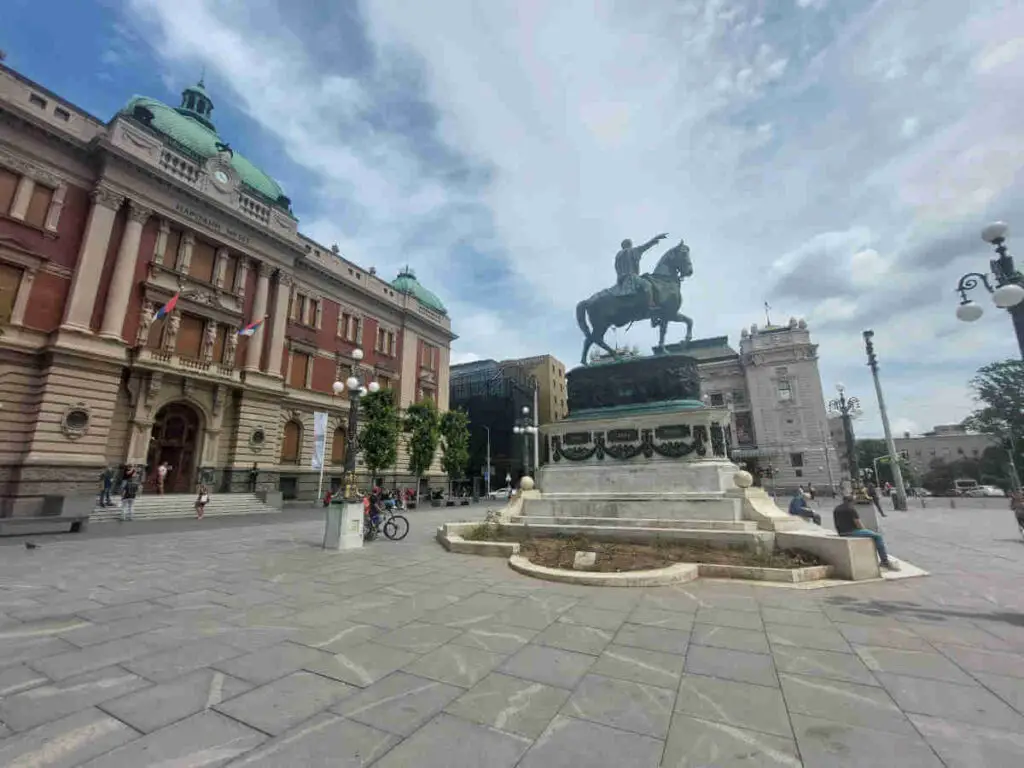
The monumental figure of Prince Mihailo on horseback is made of marble and bronze and stands 11 meters high. The statue depicts Prince Mihailo pointing towards the south, symbolizing his unrealized plans for the liberation of all Serbian cities.
The pedestal is inscribed with the names of the cities handed over by the Ottomans in 1867 – Belgrade, Smederevo, Kladovo, Soko, Užice, and Šabac. Other panels on the pedestal depict scenes from Serbian history.
Italian Sculptor Enrico Pazzi
Prince Mihailo Monument is one of the landmark works of Enrico Pazzi (1818 – 1899), an Italian sculptor, mainly active in Florence, Italy. Another notable masterpiece by Pazzi is the monument to Dante Alighieri, prominently located in Piazza Santa Croce, outside the Basilica of Santa Croce, in Florence, Italy.
The Horse
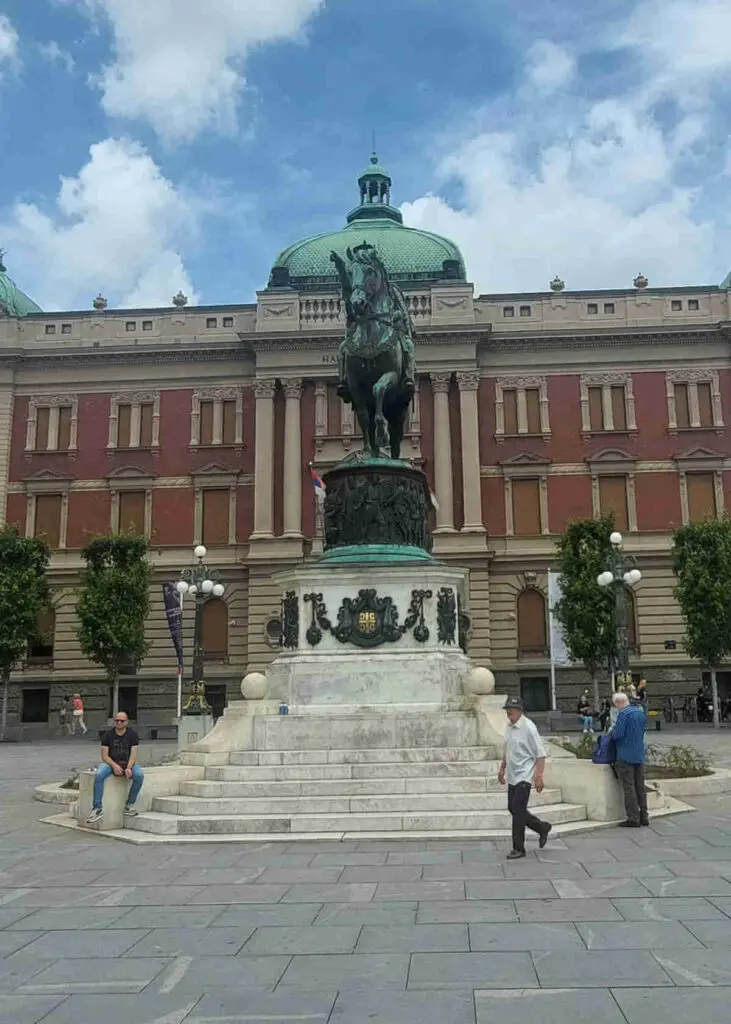
Despite Prince Mihailo Obrenović being such a prominent figure in Serbian history, the citizens of Belgrade mostly refer to the monument as “The Horse.” When referring to it as a meeting spot, they don’t say let’s meet near the Prince Mihailo Monument, but rather, “let’s meet at the horse.”
For generations, the horse remained a prototype for monuments in people’s minds. To illustrate this, there’s a story recounted by the bard of old Belgrade, actor, writer, and bohemian Čiča Ilija Stanojević. When busts of writers were later placed in Kalemegdan Park, two passers-by had a conversation: “This is Jova Ilić’s son, Vojislav, the one who wrote poems—this is his monument.” His companion skeptically shook his head: “Well, if it’s a monument, where’s the horse?”
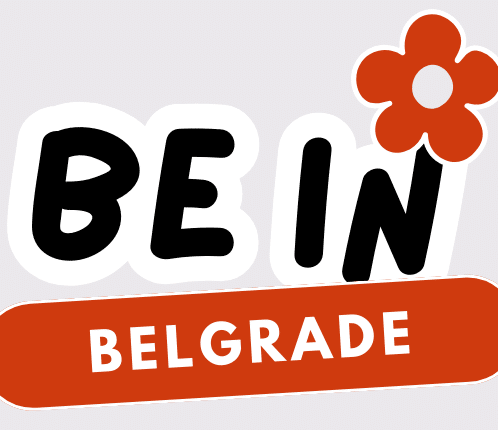
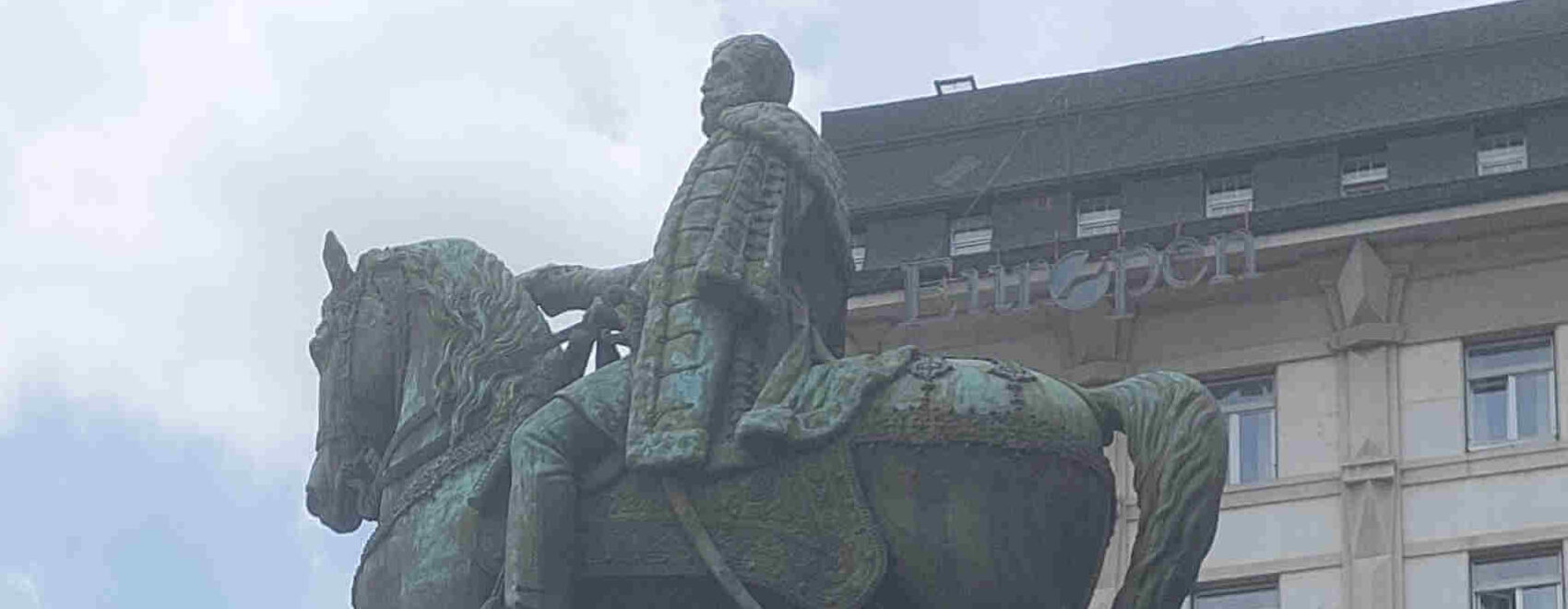
Leave a Reply